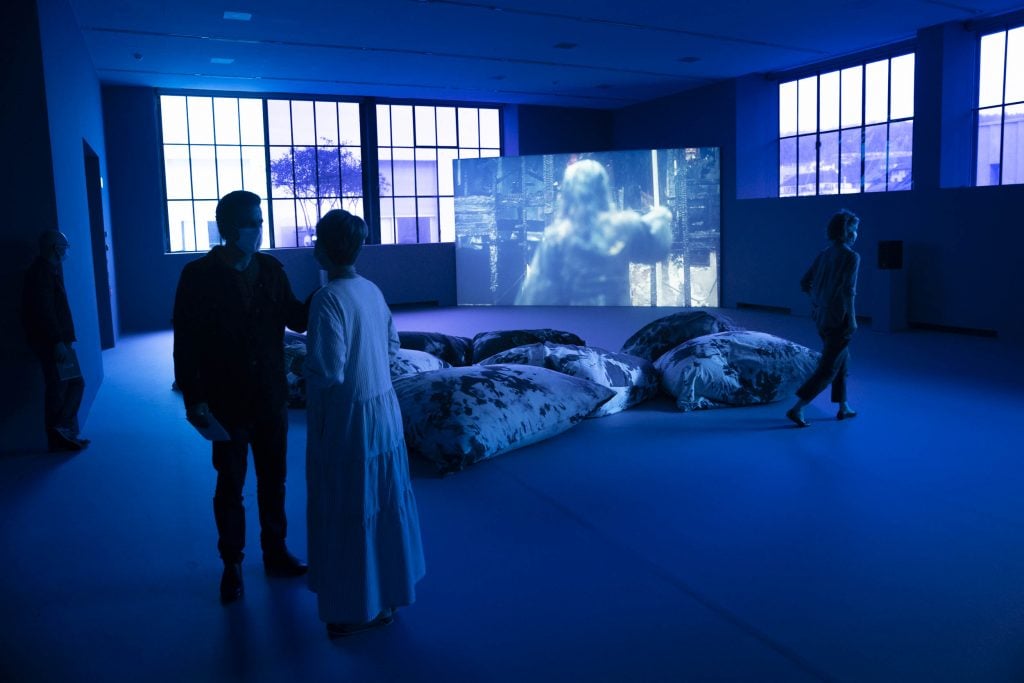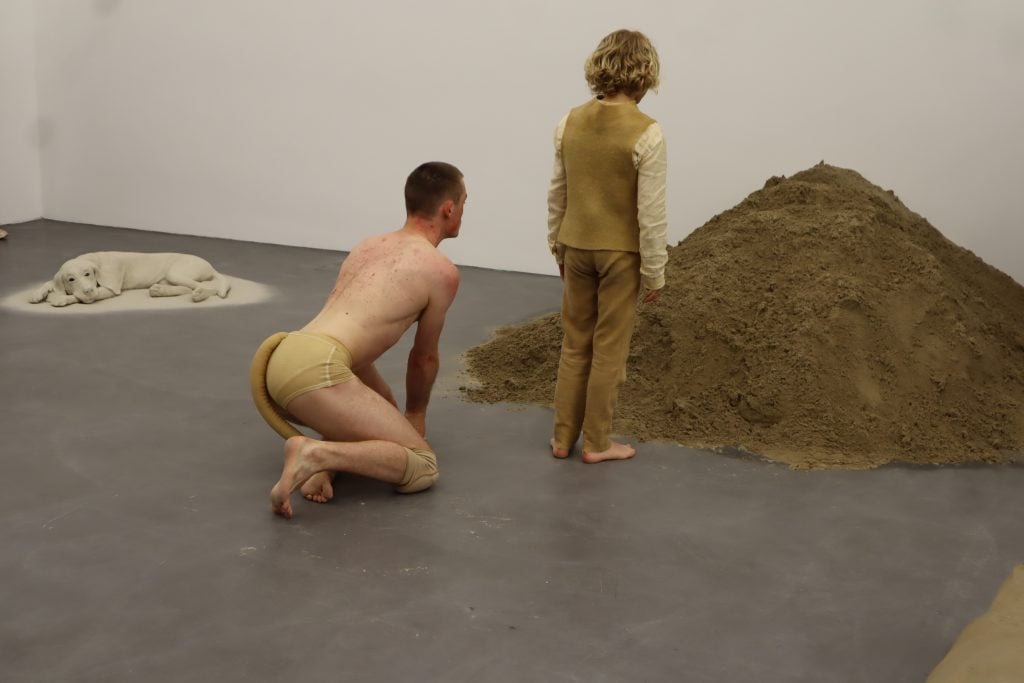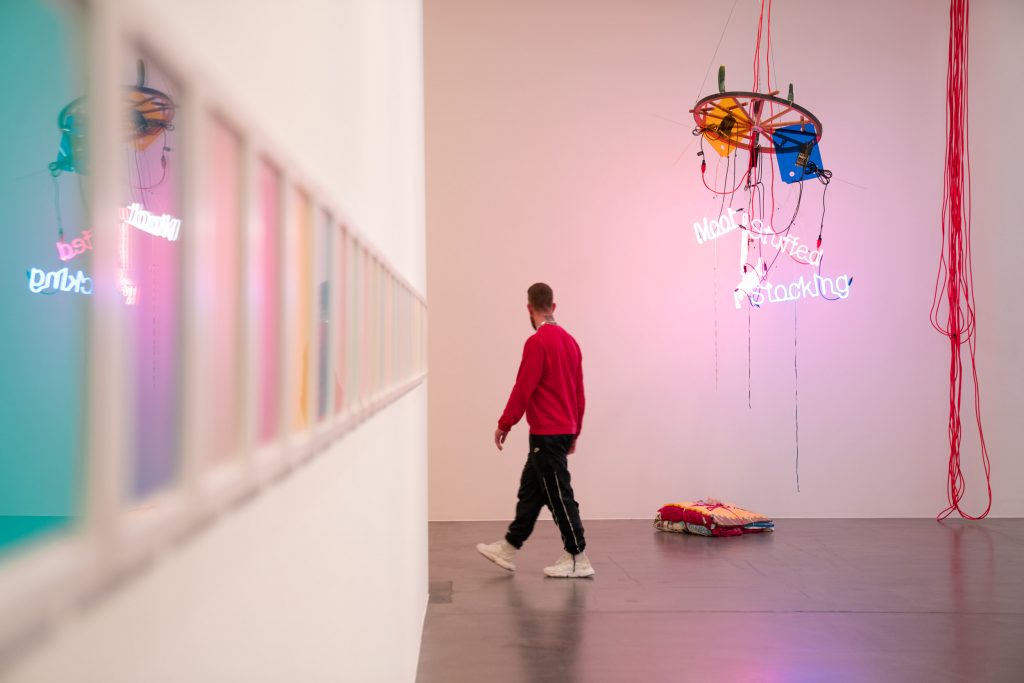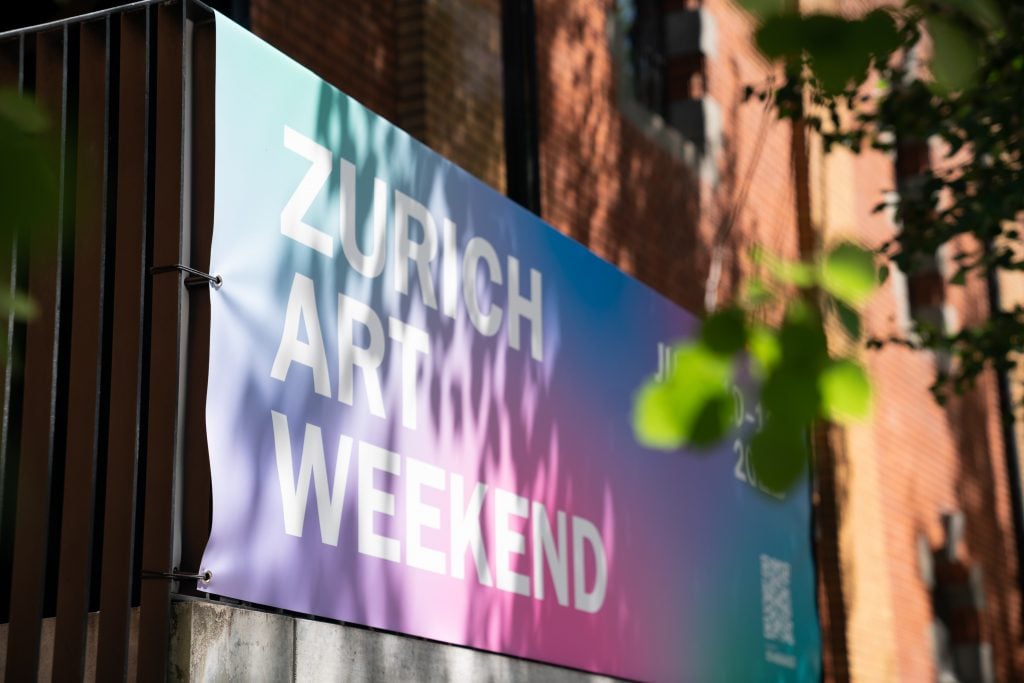Artnet News Pro
We Went Behind the Scenes With the Ultra-Wealthy Attendees of Zurich Art Weekend, Now an Essential Stop Before Art Basel
Here's who was there—and what they were buying.

Here's who was there—and what they were buying.

Naomi Rea

On Saturday evening in Zurich, Switzerland, over a symphony of excited dinner chatter and the clinking of champagne glasses toasting to Zurich Art Weekend, a seasoned French art collector faux hesitated as he raised a glass to his lips.
“If it’s not too vulgar to say,”—and, in the amber glow of table lamps on the balmy summer night, I knew he would say it regardless—“Zurich is foreplay for Art Basel.”
It has become ritual for the moneyed classes bound for the premier European art fair to pass through the Swiss financial center as something of a curtain-raiser for the week ahead. Some, like Belgian collector Frédéric de Goldschmidt, like to make a road trip out of it; those coming from overseas find it a convenient stop off as they fly into Zurich on their way to the Messeplatz.
The rest of the year, the Alpine city is a cozy enclave for high-net-worth Swiss collectors, from publishing magnate Michael Ringier to photography aficionado Nicola Erni—and the tax relief afforded to residents means it hosts the pied-à-terres of many wealthy foreigners, too.
Since the art weekend’s official launch in 2018, it has, in the words of local collector and former gallerist Claudia Groeflin Ziltener, “done a good job of making Zurich sexy again.”

Théo Mercier performance activating “Outremonde–Dream Hunters,” at Luma Westbau, Zurich. Photo by Naomi Rea.
On Friday afternoon, as the sun beat down on the terrace of the Löwenbräu—a brewery turned white cube that’s brimming with galleries, art-book stores, and museums—Swiss heavyweight collector and pharmaceutical heiress Maja Hoffmann had her own assessment.
“Zurich is lifestyle, Basel is business,” she said as she sipped her Aperol spritz. “Here, the air is clean, and people can swim in the lake—but you can barely get a good hotel in Basel.”
Hoffmann was there to watch an enrapturing performance by French artist Théo Mercier taking place at Luma Westbau, the Zurich outpost of her Arles-based art foundation. Elsewhere in the building, galleries were using the weekend to conduct business at a more leisurely pace before the feeding frenzy begins at the fair.
Francesca Pia was showing works by the U.S. artist Wade Guyton and photographs by Alvin Baltrop alongside sculptures by Heimo Zobernig. By early afternoon, they had already sold a small Guyton inkjet on linen from 2020 to a Swiss collector for somewhere between $500,000 and $1 million, and were using the show to market a large-scale piece from 2013 to the institutions in town.
Mega-gallery Hauser and Wirth, which was founded in the city in 1992, staged a sublime exhibition of Jack Whitten paintings (priced between $300,000 and $2 million) and works on paper from the 1960s. It also sold out its upstairs gallery of giant, practically fluorescent paintings by British artist Frank Bowling, priced at £900,000 ($1.1 million) each.
“It’s a very important moment for us to set up before Basel,” gallery partner Barbara Corti said. “Whereas U.S. collectors are more intuitive or faster to make decisions, with Europeans it’s always been that they need more, and they will usually take a bit longer to decide on things.” The gallery will be bringing work by Bowling, among others, to the fair.

Photo: © Urs Westermann for Zurich Art Weekend.
Compared with last year, when masks were required and people needed to check in everywhere to comply with Covid-19 restrictions, the atmosphere in Zurich was positively charged. On Friday night, Hauser and Wirth entertained clients at the legendary Kronenhalle Restaurant, where Kandinsky and Chagall are known to have enjoyed gourmet cuisine. Nearby at the Badi Utoquai—a bathing station on wooden stilts bordering the ancient Swiss lake—a motley mix of guests invited by Gregor Staiger gallery and the Swiss Institute raised glasses to toast artist Raphaela Vogel and the new director of the New York institution, Stefanie Hessler.
Swiss collectors Cristina and Thomas Bechtler were in attendance, as was Art Basel’s global director Marc Spiegler, who is principally based in the city. News had just broken that American visitors would no longer be required to test on their way back to the States, which bodes well for international attendance at the fair. (The crowd I encountered in Zurich appeared to be mostly European, although everyone was whispering that the Americans were back—I didn’t see any.)
Spiegler was also optimistic about the return of Asian clients—barring China, which is still enforcing stringent testing and quarantine restrictions—he expects to see VIPs from Japan and Korea back in force. The calendar reshuffle of the Venice Biennale also meant that its vernissage week fell earlier than usual and under more inclement conditions, so Spiegler suggested many collectors would use the fair as a jumping-off point for a less rainy Eurotrip.
How buying behavior will respond to the whiff of the recession that is coming downwind remains to be seen, though recessions haven’t, historically, been a terrible thing for the art market. “A lot of people use a recession to reinforce their collections,” Spiegler pointed out.

Photo: © Urs Westermann for Zurich Art Weekend.
Recession certainly wasn’t being felt as wine flowed easily on Saturday night at Eva Presenhuber’s gallery dinner at the lavish Baur au Lac hotel. And if Zurich is a litmus test for the sales environment at Basel, the outlook is optimistic. Elsewhere in the city’s historic cultural center, deals were being struck over raclette and vodka martinis in the Grand Café Odeon.
Presenhuber, who is one of the founding members of Zurich Art Weekend, presented Peter Fischli and David Weiss’s 1980s photographs of airports and car sculptures and, across town, a group show of the young stars in her stable. She said that she expected half a dozen or so sales to emerge from foot traffic over the weekend, too.
“For the wealthy people, I think recession is not so much a problem,” she said. Those with the resources will be looking to diversify their portfolios, betting on art as a hedge against inflation. “Also—it’s fun! At the end of the day, people buy art because they like it.”
While she conceded that last September, sales in Basel were a little slow, she expects this fair will mark a return to normal. We’ll see. It’s hard to feel glum with a Hugo—a mint and elderflower spritz favored by the Swiss in summertime—in hand and a belly full of fondue.